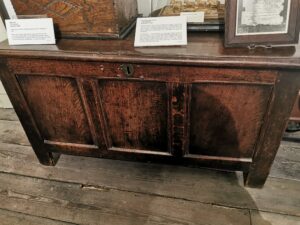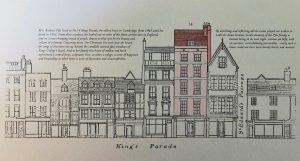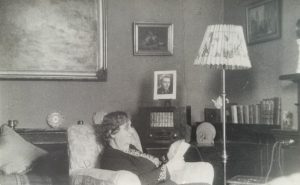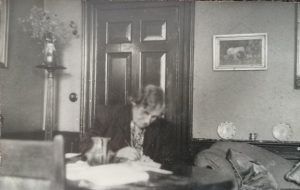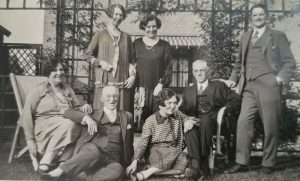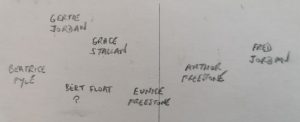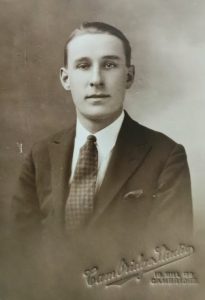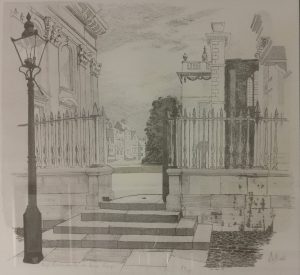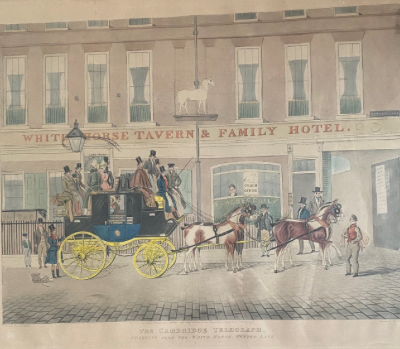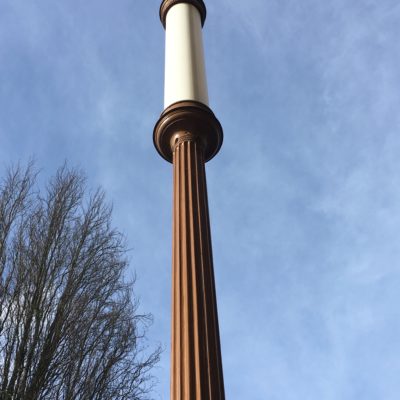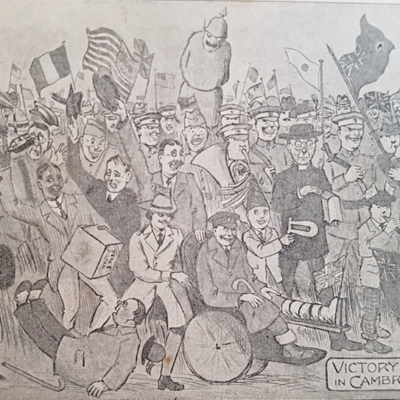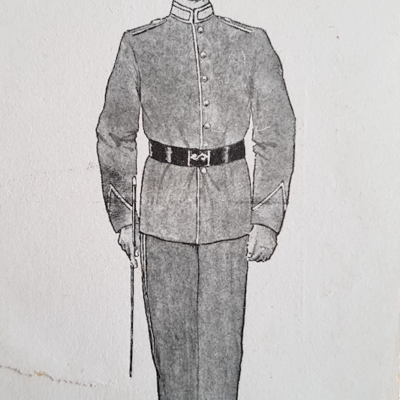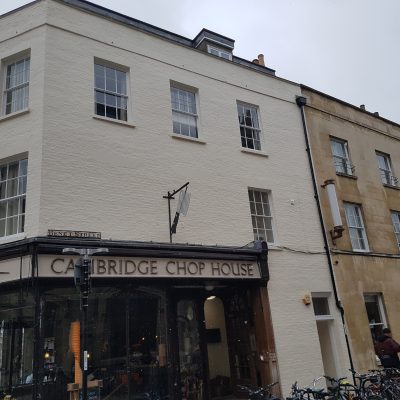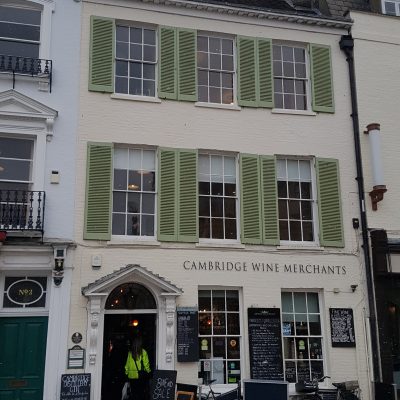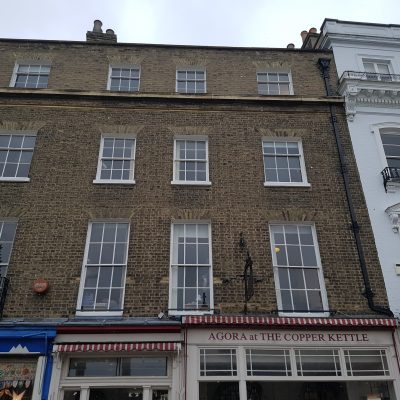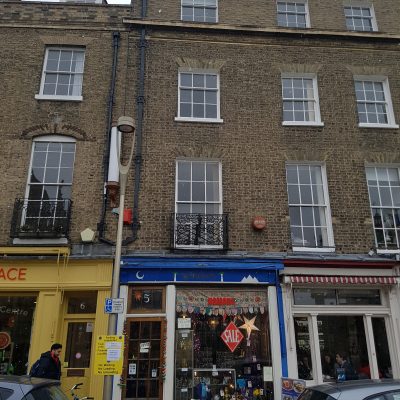Search by topic
- archaeology
- Building of Local Interest
- charity
- church
- crime
- dressmaker
- fire
- Great Eastern Railway
- Listed building
- Mapping Relief
- medieval
- oral history
- poverty
- Public House
- Rattee & Kett
- Religious House
- Roman
- scholar
- school
- Then and Now
- tudor
- women
- work
- world war one
- world war two
Search by text
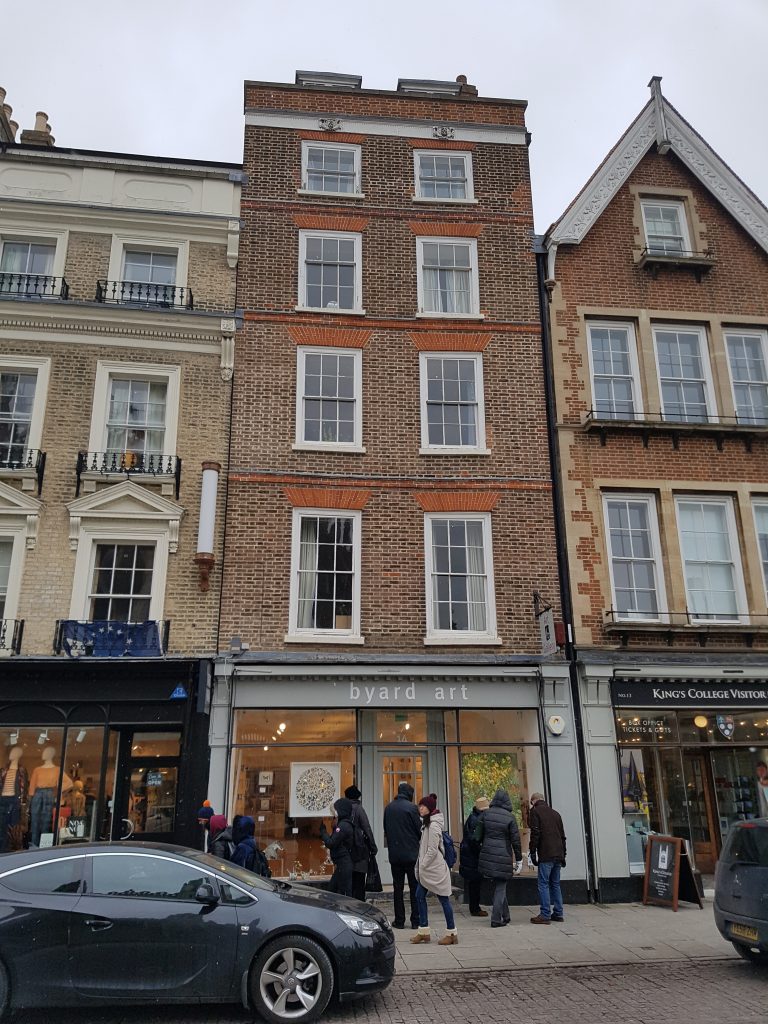
14 King’s Parade
History of 14 King's Parade
The chest is an early piece of Cambridge furniture. It is know to have been sold by William Roper, Cabinet Maker and Upholsterer, of Kings Parade whose label is pasted inside the lid. A further label suggests that the chest was once owned by William Custance a Cambridge builder, land agent, surveyor and mapmaker.
William Roper is recorded at Trumpington Street (now 14 Kings parade) in 1733 and continued there until his retirement in 1773. Roper’s label, c.1750-1760, was probably produced to differentiate his wares from thopse of his neighbour, cabinet maker, Edward Yorke, who opened a shop in Trumpington Street in 1753. As the chest predates 1750, the chest is likely to be one of Roper’s second hand items. (MoC exhibit note)
This house has 5 storeys with cellars and attics. It was built in 1787 by a Mr York, upholsterer, on the site of ‘God’s House’ or Driver’s House according to a document by John Bowtell in Downing College Library. The staircase was rebuilt early in the 19th century.
Though the site is so restricted, building to such a height is exceptional in Cambridge houses before 1800 and rare thereafter. (see 1959 Royal Commission on Historical Monuments Survey of Cambridge)
1842/3
Robert Row moved to this address from 10 King’s Parade.
1851
Mary Rowe [Row], 50, printseller’s wife, b Cambridge
1913
Rutherford and Clothier, sporting tailors and hosiers
The Misses Thompson
1943 – 1951
Mrs Beatrice Pyle lived at no. 14 Kings Parade, the tallest house in Cambridge from 1943 until her death in 1951. From these windows she looked out on some of the finest architecture in Englnd, and on a ever-changing crowd of people, drawn to that spot by the beauty and culture of a famous University town. On Christmas Eve each year she heard the songs of choristers rise up behind the candlelit stained glass windows of Kings College Chapel. And to her family this house of mellow red brick represented a central focus, a dynastic hive, a times a refuge, a scene of happiness and hospitality; at other times a scene of dissension and claustrophobia. By absorbing and reflecting all the scenes played out within its walls the house became, in the memory of the Pyle family, a human being in its own right, narrow yet lofty, with an assertive, overwhelming personality – surely such a house could not have been merely bricks and mortar! (courtesy Christopher Pyle)
1947
Mowbray’s established
1960
Cedric Pyle is recorded living here in 1960.
1962
A R Mowbray, booksellers and church furnishers
(14a) Miss Fritz Kramer
2018
Byard Art
Contribute
Do you have any information about the people or places in this article? If so, then please let us know using the Contact page or by emailing capturingcambridge@
License
This work is licensed under CC BY-NC-SA 4.0





